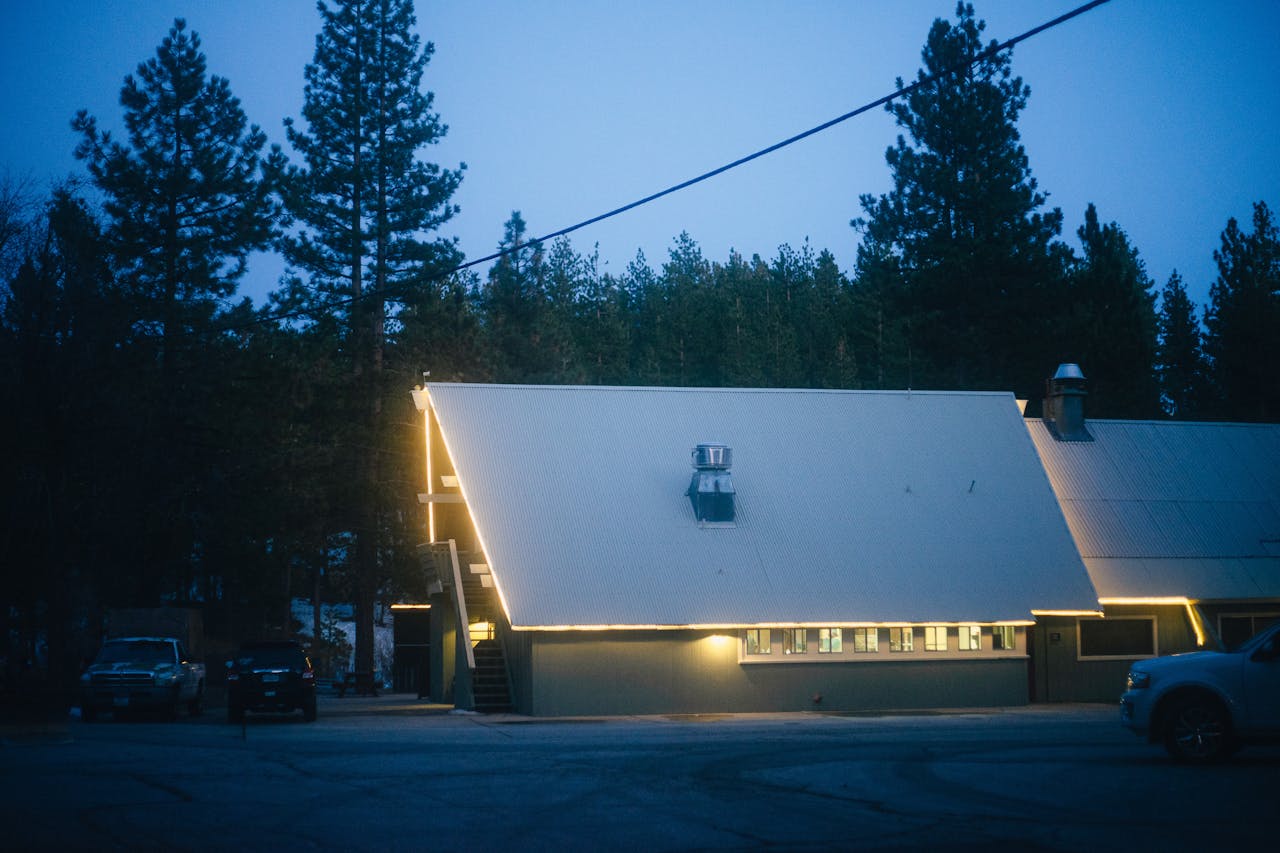Your roof protects your home during winter, and proper maintenance is crucial. A little work in the fall can save you a lot of trouble and expense during the cold winter months.
Trimming overhanging trees prevents branches from falling onto your roof during a snowstorm. It also allows the flow of air through your attic, preventing leaks and ice dams.
Clean the Gutters
As soon as the first leaves fall, it’s time to start thinking about preparing your roof for winter. Falling leaves, twigs, and debris can pile up in gutters and downspouts, clogging them and preventing proper water drainage. This is a problem year-round, but it becomes more of a concern in winter, when melting snow and rain needs to be able to flow off your roof without forming ice dams or pooling on the edges.
Cleaning the gutters can also help spot any rust, rot, or past patches that need to be repaired. Repairing these issues now can protect the integrity of your roof and avoid costly problems in the future.
The next step in preparing your roof for winter is to clean the gutters completely of leaves, twigs, and debris. This will remove any clogs and allow for water and snow to drain properly from your roof in winter storms. It’s also a good idea to trim any overhanging tree limbs, as they could potentially fall onto your roof during a winter storm and damage the shingles or other roofing components.
If you don’t feel comfortable doing this yourself, or don’t have the time, a roofing contractor can do it for you. Professionals such as Buffalo roofers can ensure your gutters are completely clean and ready to handle the added weight of melted snow and rainwater during winter storms.
One final step in preparing your roof for winter is installing heat tape or de-icer on your gutters and downspouts. These products use heat to melt the ice blockages that often form in winter on your gutters and downspouts, helping prevent them from blocking the drainage system on your roof and causing water leaks.
In addition to cleaning, inspecting, and repairing your roof and its components, it’s also important to have the proper insulation in place. Proper insulation will keep warm air in your home and cold air out, preventing any unnecessary heating or cooling costs throughout the winter months. This can also reduce the amount of moisture that forms in your attic and on your roof, which can cause ice dams or mold.
Trim the Trees
Fall is a great time to take care of your roof before winter. Performing basic maintenance tasks like cleaning the gutters and inspecting the roof can save you hundreds of dollars in costly repairs from leaks or ice dams later. The roof is responsible for protecting your entire home from top to bottom, so you want to make sure it’s ready for winter weather.
Your roof gathers a lot of debris throughout the year, including seeds, grass, leaves, twigs and branches from nearby trees. This debris collects moisture, which over time can cause a number of issues such as mold, mildew, algae growth and even rotting. The best way to prevent this is by regularly cleaning the debris off of your roof with a ladder or roof rake.
As the seasons change, you may notice the amount of debris that accumulates on your roof increases. This is due to the many leaves falling off of the surrounding trees, which can end up in the gutters and clogging them. The additional debris on the roof can also contribute to ice dams, which are detrimental to your roof.
If you have tall trees that hang over your house, it’s a good idea to trim them before the winter. Overhanging branches can damage your roof during heavy storms. They can scratch or dent the shingles and break off during strong winds. They can also cause the roof to sag and crack, and they can make it easier for rodents to enter your attic.
A professional can help you trim the trees to protect your roof and your home. In addition to trimming the branches, they can also ensure that there is adequate ventilation in your attic. This is important because it will keep warm air from seeping into your home and causing ice dams. It will also ensure that moisture doesn’t collect in the attic and cause wood rot or mold. A professional can clean your chimney, remove any bird droppings and other debris, and test the carbon monoxide detectors to ensure they are working correctly.

Inspect the Roof
As winter approaches, your roof is your first line of defense against snow, ice, cold winds, and other elements that can cause significant damage and discomfort. Preparing it properly will allow you to avoid hefty repair costs and ensure the safety and comfort of your home’s occupants. This is why it’s essential to perform a number of critical steps involving inspection, cleaning, repair, reinforcement, and winterization.
Start with a visual examination of the roof. Check the roof for cracks, missing shingles, rust, and signs of water leakage. Inspect the gutters and downspouts to make sure they are free of leaves, twigs, and debris. This will ensure that when melting snow flows down the roof, it has a clear path away from the house to prevent water accumulation and ice dams.
During this stage, you can also look for loose shingles or tiles and any areas where the roof appears to have been patched. These are good candidates for further repairs to prevent further damage from occurring in the future.
If you’re fit enough, you should consider climbing a ladder and inspecting the roof from above. However, you can use binoculars to get a closer look without getting on the roof or using a ladder. During this inspection, look for damaged or missing shingles, cracks, loose sheathing, and broken downspouts. You should also pay attention to the chimney and look for any obvious signs of wear and tear or deterioration.
If you can’t perform a proper attic inspection, it’s a good idea to hire a professional to do it for you. A professional will make sure your attic has sufficient insulation to keep the heat from escaping into the living space. In addition, they’ll look for signs of mold, insects, and animal nests. They’ll also make sure that the vents are in good condition and that there are no gaps or holes. Finally, they’ll make sure that there is adequate ventilation to avoid excessive moisture buildup and odor.
Install Heat Cables
The fall is the perfect time to install heat cables and eliminate ice dams before they form. These cables work at specific temperatures to melt ice and snow that can lead to roof leaks and shingle damage. Before you purchase the cable, check with your roofing contractor to make sure it will be compatible with your roof’s material. You may also need a special power outlet to ensure the heat cable can warm your roof properly.
Figure out where you want to place the cable and how much you’ll need. Most often, the cable is placed in a zig-zag pattern along eaves that are prone to forming ice dams. It can also be run around dormers and valleys, which can also be prone to these dams. Once the cable is placed, it should be plugged in and turned on. Then, the temperature should be adjusted, as you don’t want it to overheat or cool off too quickly.
As you plug the cable in, be sure it is being used with a ground fault circuit interrupter (GFCI) outlet. This helps to prevent electrical shock and ensures the cable is safe. Then, you’re ready to start prepping your roof for winter!
In addition to the ice dam prevention steps, you should always clean your gutters to keep them clear throughout the winter. This can be difficult, but it’s well worth the effort to avoid clogging them with debris that can cause serious water issues. You should also trim any limbs that hang over the roof and may come loose during a storm.
Finally, if you use the roof for seasonal decorations, avoid using nails or screws to secure them. Instead, look for insulated clips that are designed to be used on the roof or bungee cords to avoid causing any permanent holes in the roof’s structure.
